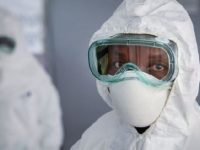Abstract
 Low frequency noise (LFN) (= 500 Hz, including infrasound) exposure causes different types of damage to different organs. In the pericardium – a translucid sac that surrounds the heart – it causes the formation of a new layer of tissue, increasing pericardial thickness 100 to 300%.
Low frequency noise (LFN) (= 500 Hz, including infrasound) exposure causes different types of damage to different organs. In the pericardium – a translucid sac that surrounds the heart – it causes the formation of a new layer of tissue, increasing pericardial thickness 100 to 300%.
In the blood vessels, LFN exposure induces thickening of the vessel wall, resulting in a continuous, blanket-like layer throughout the vessel. This is in opposition to artherosclerotic plaques, for example, which attach to vessel walls in clumps. In the respiratory tract, LFN exposure causes the growth of diffuse fibrosis in the trachea and focal fibrosis in the lung. Simultaneously, it is responsible for the shearing and depletion of ciliary fields and fusion of brush cell microvilli. How the transmission of acoustical energy induces these biological effects is still greatly unknown.
Although biochemical factors must contribute greatly, biomechanical effects due to the direct presence of acoustical phenomena cannot be discarded. The need for biological tissue to maintain structural integrity given the probable acoustical disturbance of biological tension and compression factors, will be discussed within the scope of vibroacoustic disease and the principles of biotensegrity.
Low Frequency Noise Exposure and Biological Tissue: Reinforcement of Structural Integrity? (PDF Download Available). Available from:
https://www.researchgate.net/publication/286514638_Low_Frequency_Noise_Exposure_and_Biological_Tissue_Reinforcement_of_Structural_Integrity [accessed Jun 10, 2017].





